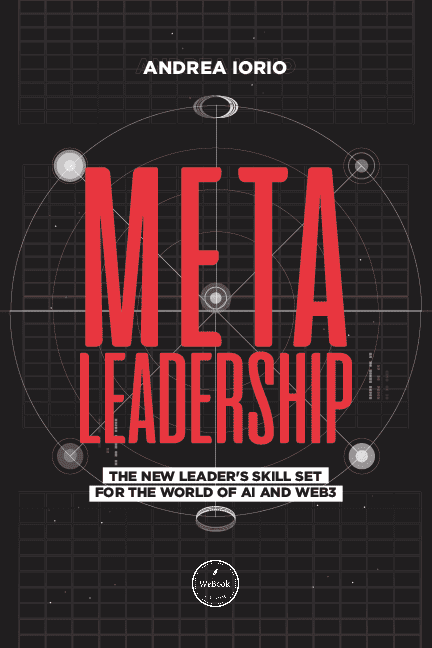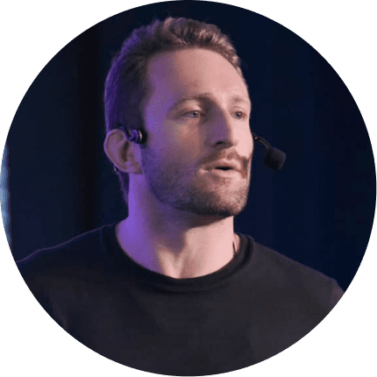Back in the early 2000s, when I was studying in Italy, I remember learning Latin, Greek, and Philosophy, but technology was never really part of my education. Computers, and even calculators, were forbidden, and instead of recognizing their potential to make us more productive, they were seen as significant threats. If you've followed the recent ban on ChatGPT by the Italian data privacy authority, regardless of whether it's fair or not, you can see how Italy tends to be conservative and hesitant when it comes to new technologies.
This attitude can pose a significant problem. When we look at the digital competitiveness of a country like Italy, it lags far behind compared to countries like Brazil, United States and China. Can you name any significant digital company or startup that has emerged from there? Unfortunately, there are none of relevance.
That's why I want to dedicate this article to an extremely important topic: how can we all understand AI, interact with it more effectively, and make it a part of our businesses? In this article, we will discuss why everyone should understand Artificial Intelligence and explore a data-centric AI model that will facilitate the adoption of AI worldwide. This crucial topic is addressed by the protagonist of this article, Andrew Ng, the founder of Coursera, former Head of AI at Baidu, and one of the world's leading experts on AI. Watch the video below (don't forget to enable YouTube subtitles).
0.04 - 1.03
"When I think about the rise of AI, I am reminded of the rise of literacy. A few hundred years ago, many people in society thought that not everyone needed to know how to read or write. At that time, many people worked in fields or tended to sheep, so there might have been less need for written communication. All that was needed was for the priests, priestesses and monks to know how to read the Holy Book, and the rest of us could simply go to the temple or church or sacred building and just sit and listen to the priests and priestesses read it to us. Fortunately, we have since discovered that we can build a much richer society if many people know how to read and write. Today, AI is in the hands of priests and priestesses. These are the highly skilled AI engineers, many of whom work in technology companies. And most people have access to the AI they build for them. I believe we can build a much richer society if we can enable everyone to help write the future."
Let's start by understanding something very important and trying to answer a question: why is AI development concentrated in the hands of a few large technology companies?
The answer is actually quite simple: AI requires significant financial investment to be developed. According to OpenAI, the research organization responsible for developing Chat GPT-3, the total cost of the project is estimated at around $4.6 million. This includes not only the cost of developing the model itself but also the cost of training it using large amounts of data. At the same time, we know that Microsoft invested $10 billion in OpenAI to continue training increasingly larger Large Language models.
This has contributed to a concentration of power, which was already mentioned by Amy Webb in her 2019 book, "The Big Nine," where she discussed the concentration of power in the AI field among nine companies: Amazon, Google, Facebook, Tencent, Baidu, Alibaba, Microsoft, IBM, and Apple.
What is required to develop these models? Well, it takes many highly skilled engineers, computational power, and a large volume of data. Once again, these are things that only large technology companies possess.
It's interesting to note that these companies have been quite successful in leveraging AI because they use "one-size-fits-all" models, meaning specific applications (such as ranking search results for Google or suggesting products to buy in e-commerce, as in the case of Amazon) that can be scaled to a large number of customers or users.
The significant problem arises when this AI recipe is applied outside the technology field, where unique projects cannot apply to hundreds of millions of people. Let's consider the following example: I enjoy eating at a Thai restaurant next to my house in New York every Friday. It has become kind of a ritual for me, and what's interesting to think about is that every order they receive is fulfilled. The problem, however, is that the restaurant lacks the technology to optimize its ingredient purchases based on predicting the most popular dish on Friday night (my favorite is Pad Thai). Having an AI system capable of doing that would be immensely helpful.
You might say, "But Andrea, that's too small of a thing, it won't make a significant impact." However, I assure you that anything that helps the restaurant, even if it's just a few dollars a day, will make a massive financial difference in the long run.
You might also argue, "But Andrea, the Thai restaurant alone will never have the volume of data required to fuel an AI." The interesting thing here is that the crux of the matter isn't the volume of data but another issue that hinders the Thai restaurant owner: they will never have a large enough audience to generate the revenue needed to hire an AI team. (By the way, if you happen to be in NY, I highly recommend the restaurant, it's called Sala Thai).
Considering that each restaurant in the world, and in the United States, has a different menu, different dishes, different prices, and so on, do you see why a "one-size-fits-all" model doesn't work? This is the so-called "long tail problem" of AI. One-size-fits-all models are much more impactful for specific applications (such as recommending dishes in restaurants or suggesting shirts or glasses, and so on). Each of these is a unique and customized project, and that's why there are millions of opportunities for projects like these, none of which are being worked on, but their aggregated value is massive.
So, the question that remains is: how can we empower more people to create AI models and systems that are relevant to them?
"Andrea, everyone has to learn to code for AI, right? But that's something difficult. How can the owner or employee of a Thai restaurant learn how to do this in a short period of time?" That's precisely why there's an alternative system proposed by Andrew Ng, the protagonist of this article, in the above-mentioned TED Talk. He suggests that, just as paper and pen are far superior technologies to stone blocks and chisels and were crucial in exponentially increasing humanity's literacy rate, there are AI development platforms that shift the focus from data coding to data supply, which is much simpler for the Thai restaurant owner, don't you agree?
How does this work in practice?
AI systems consist of software - the computer program that includes an AI model - and data, the information used to train the model. For example, to build an AI system for automated inspection in manufacturing, an AI engineer might create software that implements a Deep Learning algorithm, which is then shown a dataset comprising images of good and defective parts, so it can learn to distinguish between them. In the last decade, much AI research has been driven by software-centric development (also called model-centric development), where the data is fixed, and teams try to optimize or invent new programs to learn from the available data. Many technology companies had vast datasets of millions of consumers and used them to drive a lot of AI innovation.
However, at the current level of AI sophistication, the bottleneck for many applications is obtaining the right data to feed the software. We hear about the benefits of Big Data, but now we know that, for many applications, it is more beneficial to focus on ensuring that we have good data - data that clearly illustrates the concepts we need to learn from AI. This means, for example, that the data must be reasonably comprehensive in its coverage of important cases and consistently labeled. Data is the fuel for AI, and modern AI systems need not only calories but also high-quality nutrition.
Shifting the focus from software to data provides a significant advantage: it can be done by the people you already have on your team. In a time of severe AI talent shortage, a data-centric approach allows many domain experts who have extensive knowledge in their respective sectors, and not necessarily in AI, to contribute to AI system development.
For example, most factories have highly skilled employees who can define and identify what counts as a defect (is a 0.2 mm scratch a defect? Or is it so small to matter?). If we expect every factory to ask its employees to invent a new AI software as a way to obtain the tailored solution the factory needs, progress will be slow. However, instead, we can build and provide tools to empower these domain experts to design the data - allowing them to express their manufacturing knowledge by providing data to AI - their chances of success will be much higher.
So, what's the message here?
The main message here is that we all need to take more responsibility in understanding AI, and this doesn't just mean writing code but understanding how it works, how we can help solve our business problems, and how we can collect and use data in our daily lives.
How can we educate ourselves more about AI?
Well, what I strongly recommend is... using it! What I mean is that if you choose to go the technical route, it will be extremely challenging, so the most important thing is to use AI in your daily life and see how you can become more productive.
A recent Wall Street Journal article titled "The technology skills that every employee should have now" mentions that one of the most powerful skills we can have is learning what AI can do for us. With the explosion of tools like ChatGPT for generating text and code, and Stable Diffusion and Midjourney for creating images, basic AI knowledge is accessible to everyone.
Microsoft has just announced a service called Copilot based on AI models, including OpenAI's GPT-4 – the underlying technology of ChatGPT – in its work applications. For example, Word and Outlook will be able to generate text automatically based on information from other documents, PowerPoint will be able to create presentations based on the user's natural language instructions and materials from other documents. Meanwhile, Salesforce's Slack will use OpenAI's technology to summarize conversations and help draft messages.
Since ChatGPT was launched on November 30th, Udemy instructors have released over 300 courses on the tool, including its use for summarizing documents and debugging code.
Allie K. Miller, an AI investor and consultant who led AI businesses at IBM and Amazon Web Services, says that most people should learn high-level AI principles in a class like Andrew Ng's "AI for Everyone" and try out all the new tools that promise to save work. As a technology expert, I couldn't agree more. After all, the goal is not to become an AI technician but to understand its impact and the opportunities it brings to all of us.









